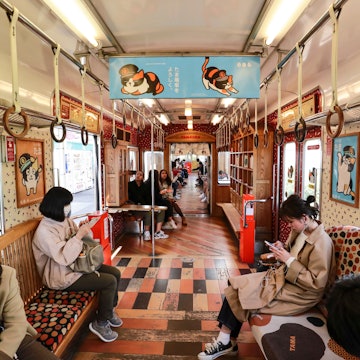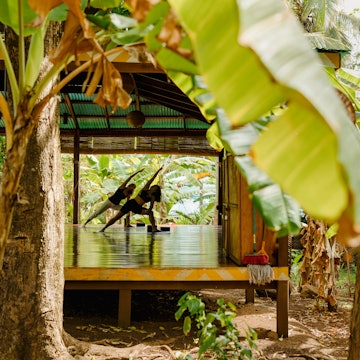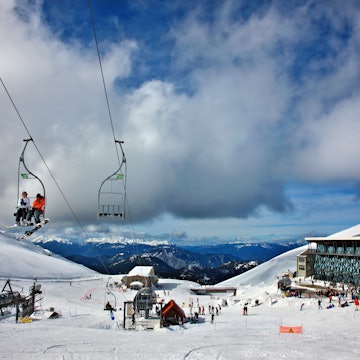

A ferry leaving Kagoshima port, Japan. hayakato/Shutterstock
Didn’t know you could go island-hopping in Japan? Well, the ferry route between Kyūshū and Okinawa in Japan's southwest is one of the world’s great boat journeys, linking a string of intriguing sub-tropical islands that are well off the nation's regular tourist trail.
There’s one ferry each day heading south from Kagoshima, at the southern end of Japan’s third largest island, Kyūshū, to Naha, the capital of Okinawa, and one heading north along the same route, from Naha to Kagoshima. Both stop at four fascinating islands on their 25-hour journey, offering the opportunity to get off at each for a unique island-hopping adventure that is as much about the journey as the destination.
The islands of Amami Ōshima, Tokunoshima, Okinoerabujima and Yoron-tō each have their own personalities. There’s not a lot of English spoken out this way, so you’re going to have to make an effort with language on this adventure, but expect it to be very satisfying.
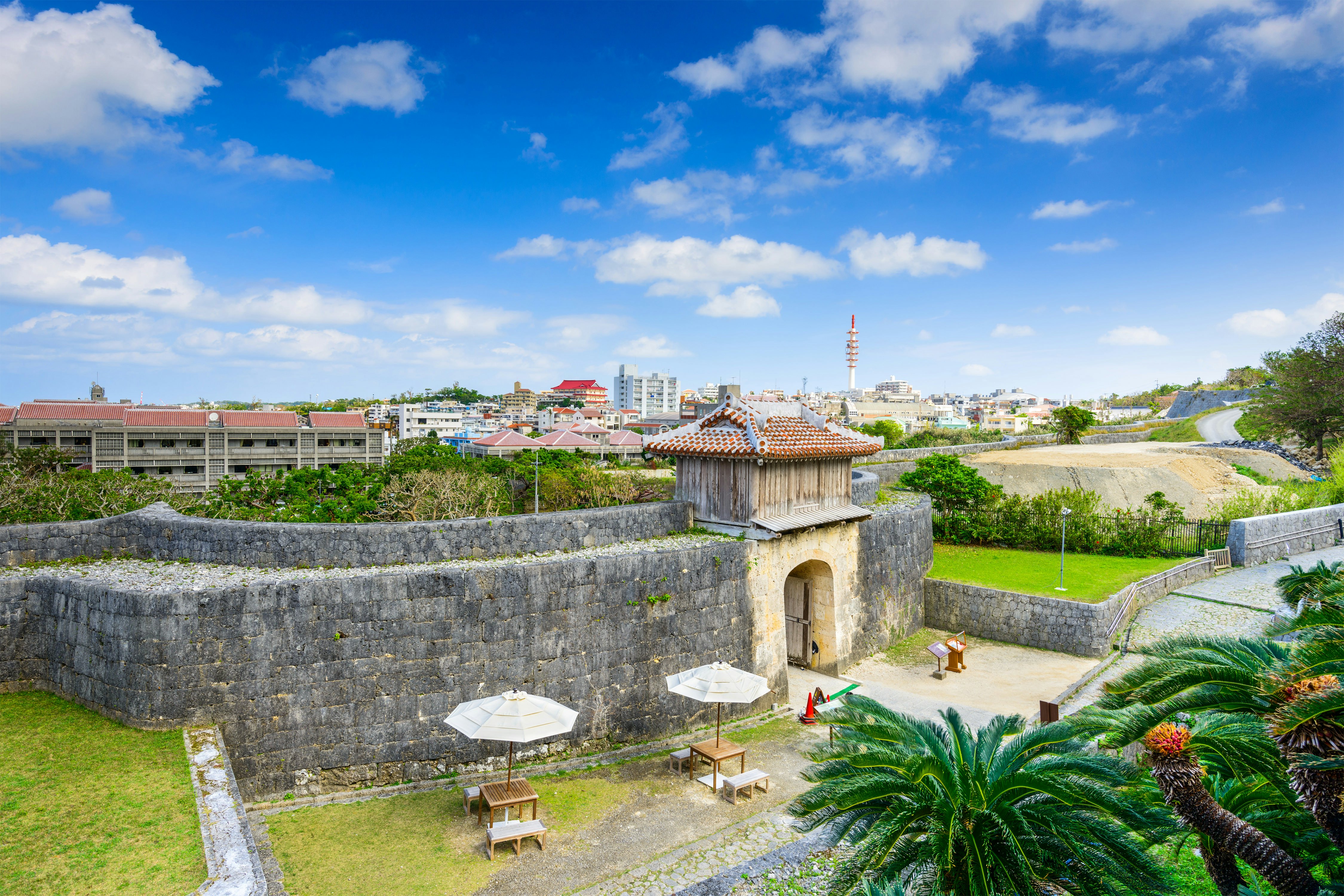
In which direction should I travel?
If you’re planning to island-hop in one direction only and stop off for a few nights at all four islands, then it’s best to fly to Naha from mainland Japan, spend a few days exploring, then take the ferry north, leaving at 7am. Up the line, the ferry will then get into Naze, on Amami Ōshima, the last port before Kagoshima, at 8:30pm.
The timings works out a lot better than starting out in Kagoshima at 6pm, as the ferry heading south gets into its first port, Naze, at 5am, and when you continue south to Tokunoshima, you’ll have to be at the port and board at 5am.
If you’re not planning to stay on Amami Ōshima (or don’t mind arriving and leaving at 5am), then it doesn’t really matter whether you head north or south.
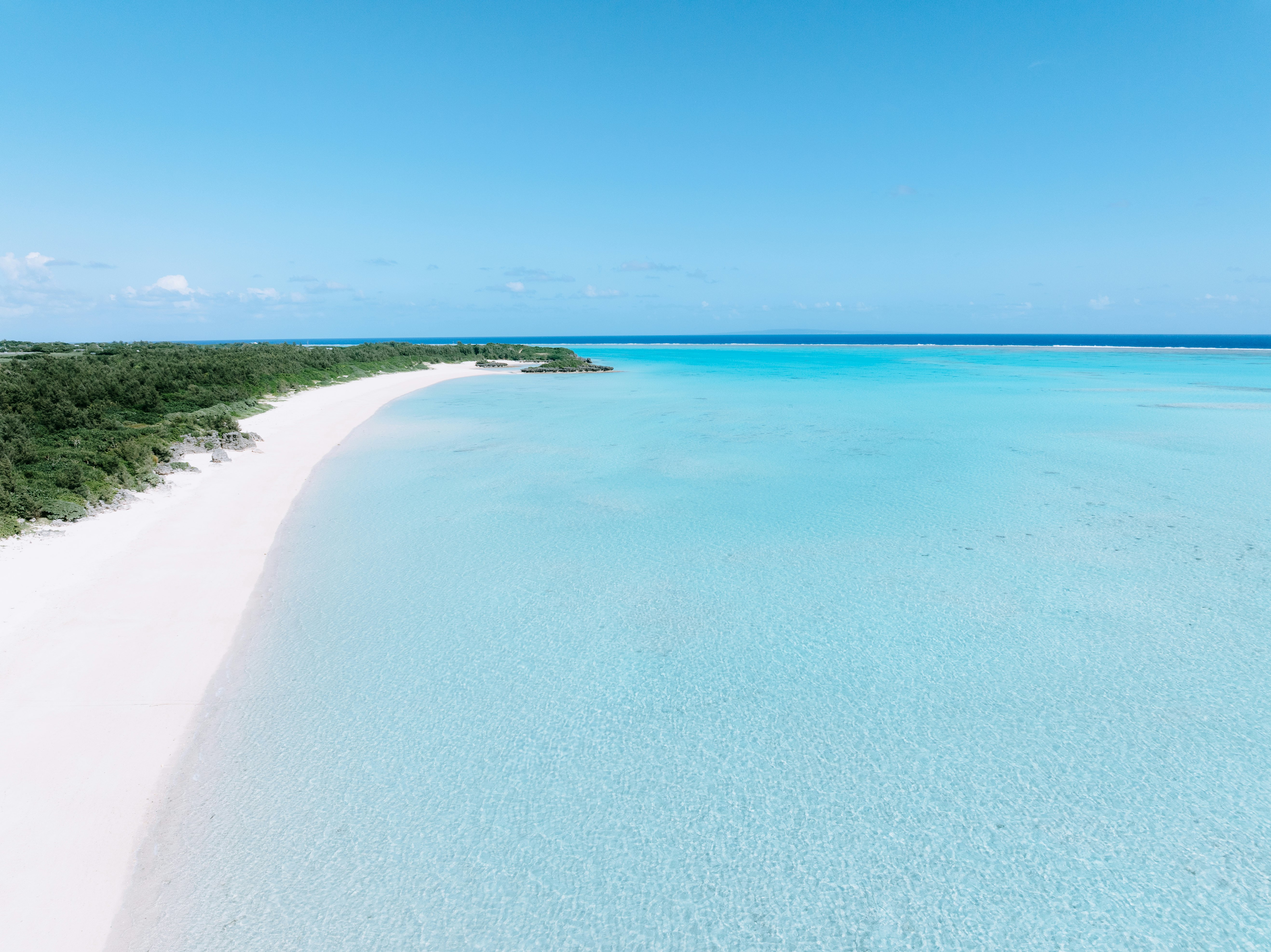
When is the best time of year to go?
While there are daily ferries year-round, if you’re after some beach time, everything has warmed by mid-April. Summer can be extremely hot and humid, while the weather has cooled down again by mid-November.
Keep in mind that June to October is typhoon season in Japan and typhoons can play havoc with ferry schedules. It’s pretty much the luck of the draw during these months, so think of it as part of the adventure and try to build a bit of flexibility into your schedule.
Do I need to pre-book the ferry?
During Japanese holiday periods such as Golden Week (late April to early May) and summer vacation times (July 20 to the end of August), it pays to make bookings. In quiet times, you can turn up an hour or so before departure and just buy the cheapest ticket to the next island.
There are actually two ferry companies operating on alternate days: Marix Line and A-Line (Marue Ferry). They both run to the same schedules and charge the same amount, so it doesn’t really matter which one you ride with.
If you like planning ahead, then you can pre-book all your ferry rides and accommodations on each island. If you’re into total flexibility and are traveling at quiet times, do as you please.

What are the ferries like?
Don’t expect anything luxurious, these aren’t cruise ships. They’re inter-island ferries that have delivering freight, the lifeblood of the islands, as their primary purpose. In return, they cart agricultural products from the islands to market. Moving islanders to and from the various islands to Kagoshima and Naha comes next, with carting tourists, especially non-Japanese speaking ones, as an afterthought.
The ferries have outside viewing decks and a variety of styles of sleeping rooms. The cheapest ticket gets you a sleeping mat, pillow and blanket on the floor of a large room that may have 50–60 such spots. There are three more levels of sleeping options above that, right up to a private suite. The only leg in which you’re likely to sleep, whether you’re heading north or south, is the 11-hour overnight leg between Kagoshima and Amami Ōshima. Check out images of your sleeping and ticket options on the websites.
There’s a simple restaurant on board, open limited hours, and you buy meal tickets from a vending machine. There is also a small shop stocked with snacks and souvenirs, plus vending machines selling drinks on each of the four ferries. They also have shower rooms and lockers for valuables.
Marix Line has English-language tutorials on how to make bookings, how to board and videos on the ferries and islands.
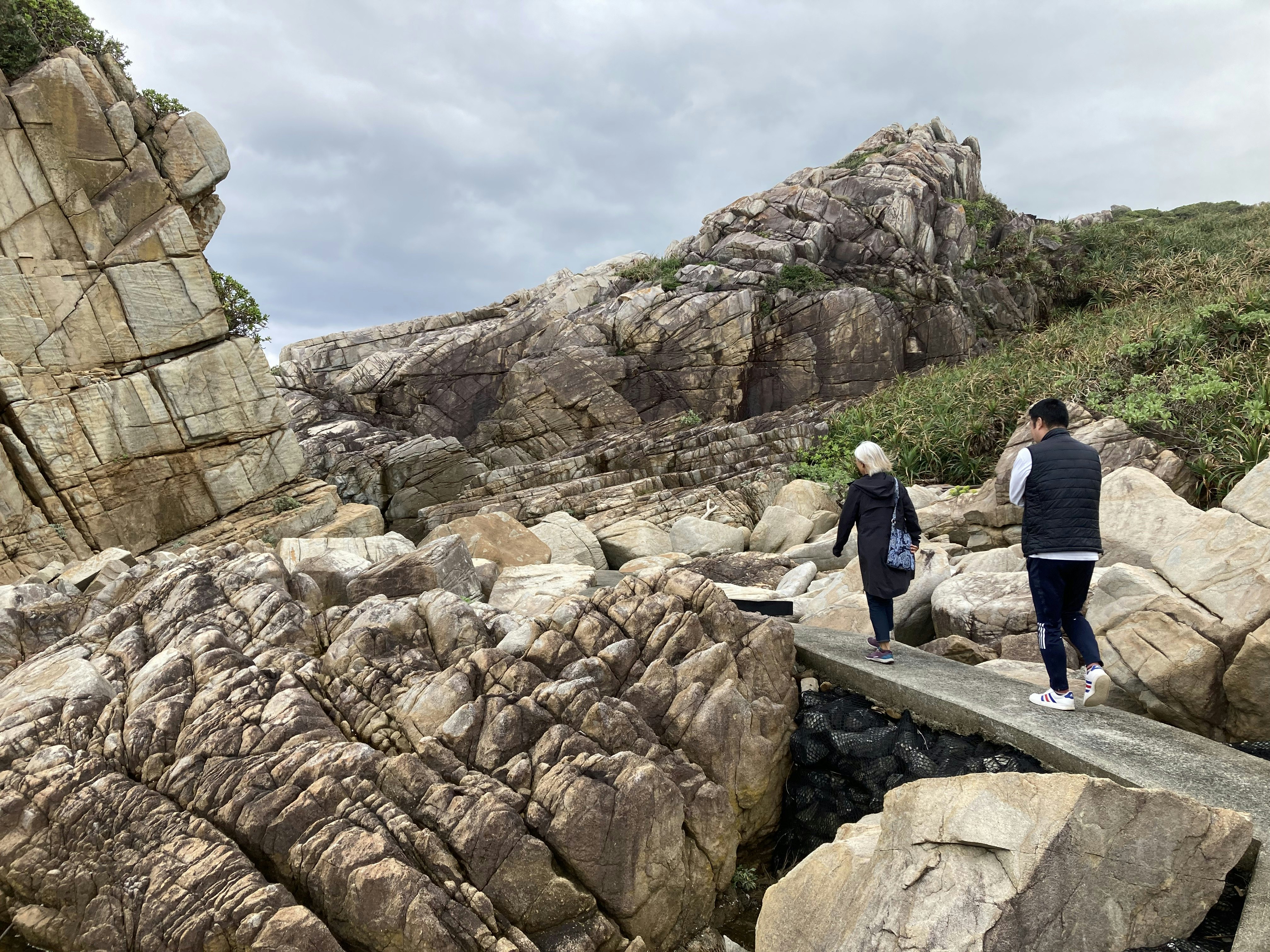
Can I take my rental car, moped or bike on the ferry?
You can take a car, moped or bicycle (for a fee) with you on the ferry between any of the islands, but in this case it pays to make a booking. Also, be aware that one-way rental car return fees will be exorbitant if you take a rental car on the ferry from Kagoshima to Naha or vice versa; it would be much more cost-effective to get a rental vehicle for as long as you need it on each of the islands.
What should I see on each island?
There are no big-ticket must-dos out here, but there’s a lot of interesting things going on.
Amami Ōshima, with a population of 73,000, is the biggest of the islands, known for its beaches and nature. In 2021, parts of the island were listed as a World Heritage Natural Site. Having your own wheels is a great way to explore here.
The Amami Islands get smaller the further south you go. Tokunoshima, home to around 25,000, is an intriguing place. Not one, but two Guiness World Record-holders for the world’s oldest person have come from Tokunoshima, while at the other end of the scale, the island has Japan’s highest total fertility rate of 2.25. The island’s greatest passion is for tōgyū, a kind of bovine sumō, that has a 400-year history.
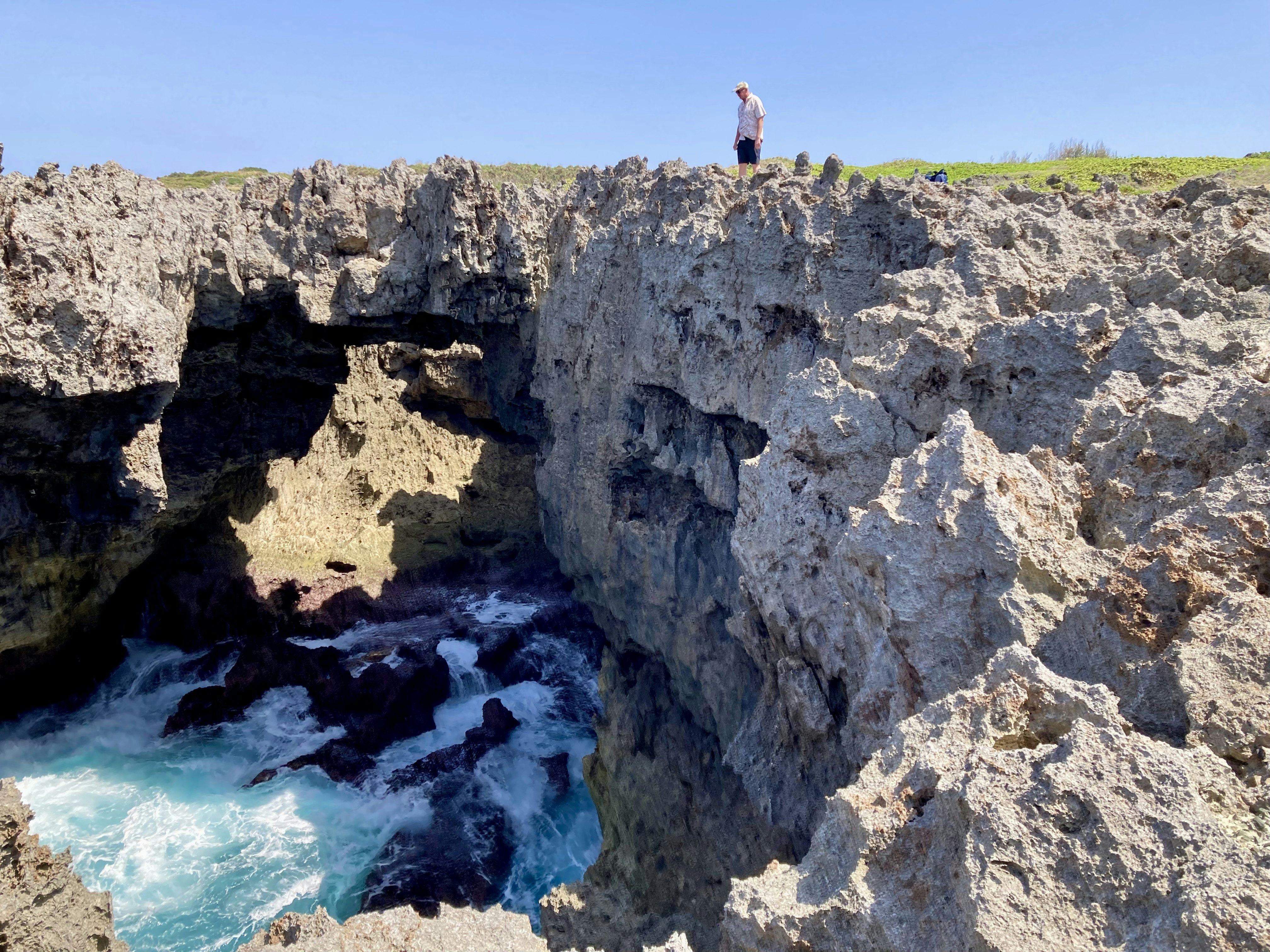
Okinoerabujima is a raised coral atoll with a population of 14,000 people. The island is known for its amazing limestone rock formations, exquisite cave systems and for its flowers, especially the Erabu Lily, which blooms from mid-April through May.
Tiny Yoron-tō, a raised coral island with a population of 6000, is only 23km (14 miles) in circumference and perfect for riding around on a bike. There are some 60 white-sand beaches, a huge array of turquoise hues within the surrounding reef, plus Yurigahama, a sandy islet that only shows itself at low tide.
Should I pre-book accommodations on each island?
You can book a place to stay on the islands through search engines such as Trivago, booking.com and Japanese sites like Rakuten Travel and JAPANiCAN. All the islands, except Yoron-tō, have simple hotels and Japanese-style places within walking distance from the port. On Yoron-tō you’ll have to go further afield. Book well in advance if you’re turning up during Japanese holiday periods.
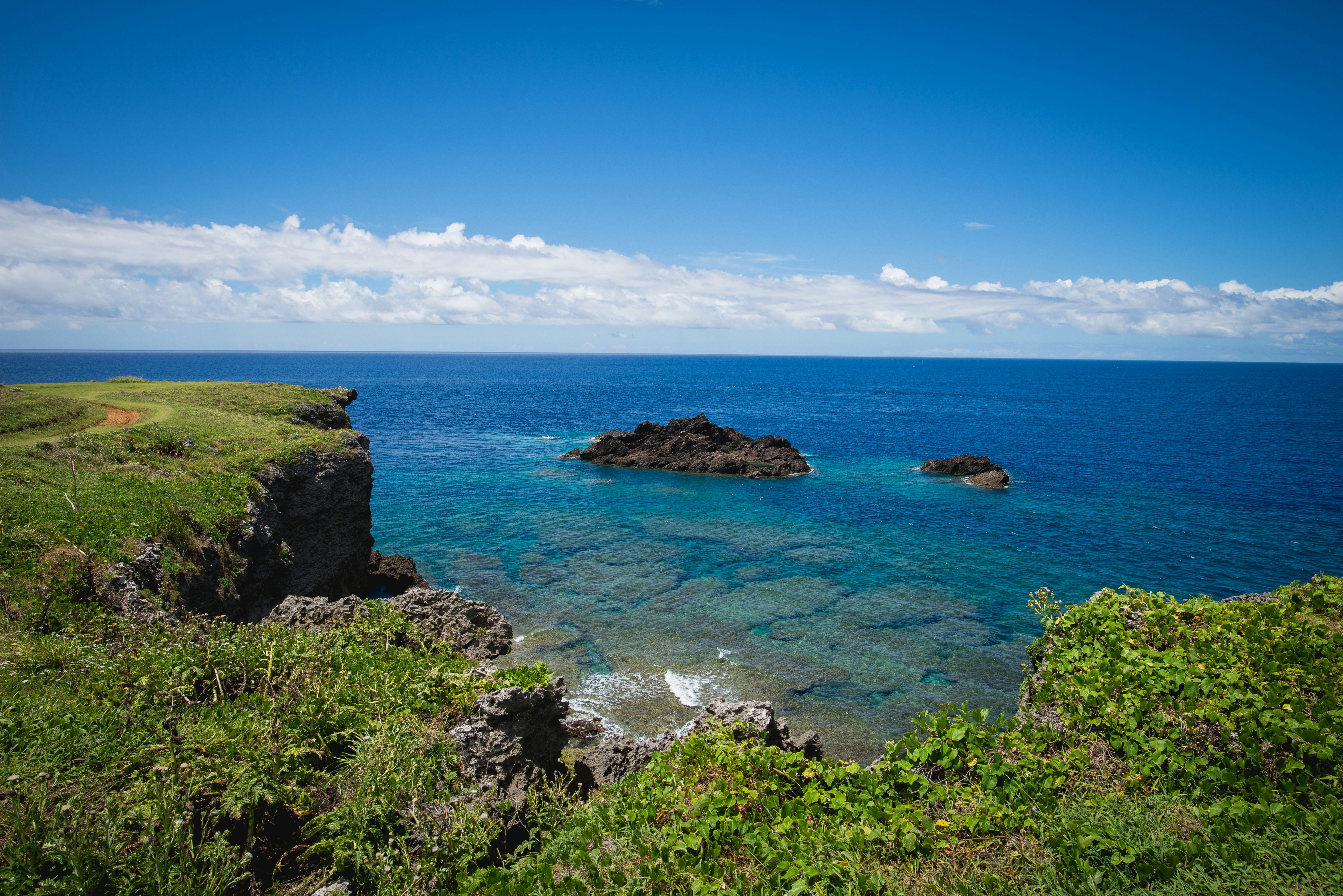
Would this make a good bike-packing trip?
This island-hopping trip is excellent for backpackers and bike-packers. Taking along a bike is a great option and all the islands have camping areas.
What else should I know before I go?
Pack your bag lightly. You need to be able to carry whatever you take up lengthy stairs to get both on and off the ferry.
Consider taking along your own snorkeling gear if you can fit it in.
If you’re traveling between June and October, keep an eye on weather forecasts before the start of your ferry trip. If a typhoon is on its way, all Japan will know about it and be keeping an eye on its progress.
Tokunoshima and Okinoerabujima have secondary ports on the other side of the island that are used if seas are large and from the wrong direction. Be aware that the port in use may change at the last minute; in such a case, someone will help you get to where you need to go.
Don’t book your international flight home for the day following the end of your ferry trip. Allow some flexibility in your schedule.








